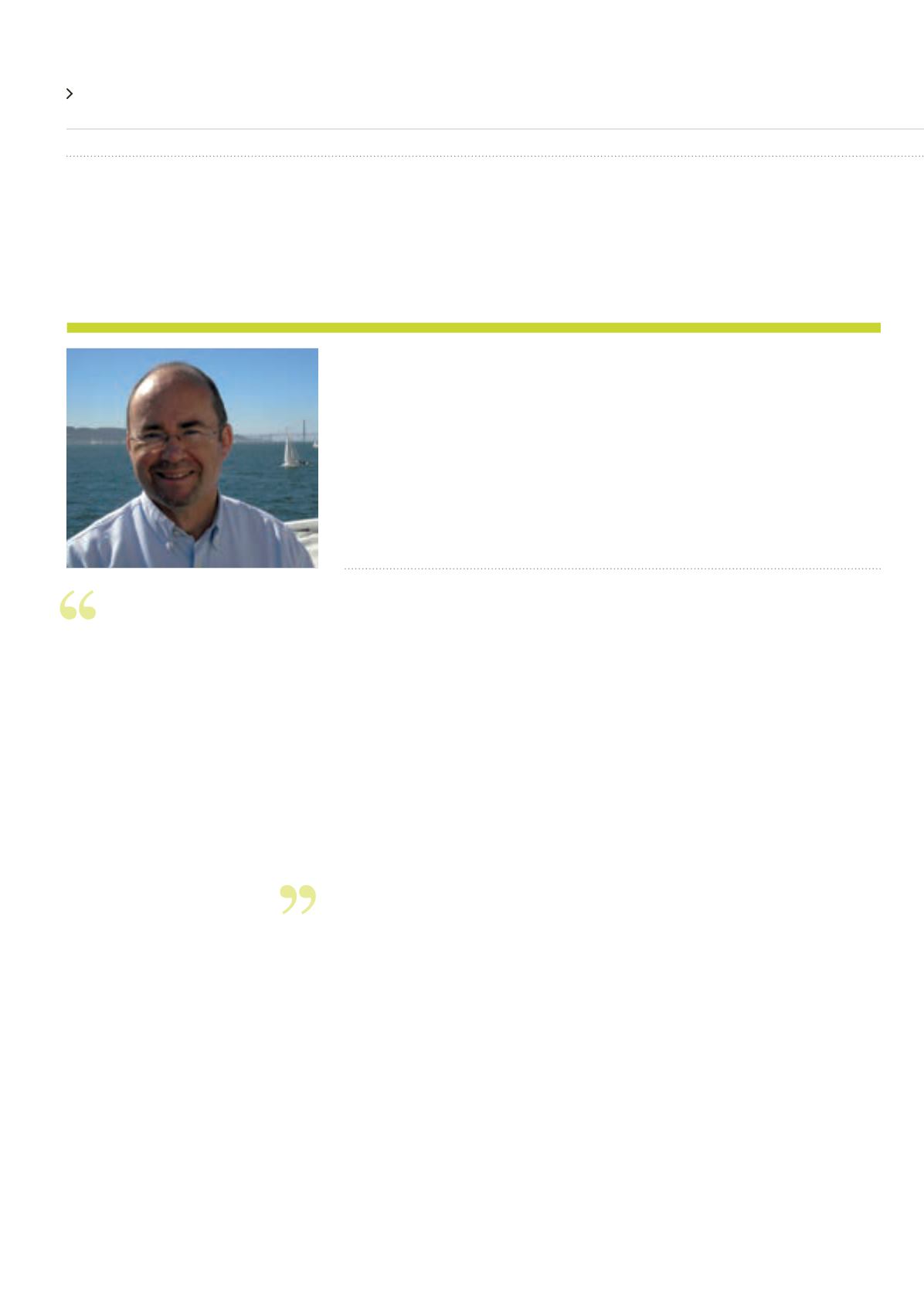
Concordia
Merchant Taylors’ School
Jonathan
Gibson
Professor Jonathan Gibson MB BS
MD FRCSEd, FRCOphth
(1966-1971) is a
Consultant Ophthalmic Surgeon for the Heart
of England NHS Trust, Birmingham and a
Professor of Ophthalmology at the University
of Aston. He looks back at his time at Merchant
Taylors’ and his career
through the science side to eventually
reach the pinnacle of Biology Upper
Sixth. Other memorable masters I
encountered on my journey were A.P.W.
(“Fanny”) Hill, who was my form master
in Science Division A1 and who was
largely responsible for inspiring an early
interest in Biology, and W.H. Thorning,
the Head of Science, who humoured my
decision to give up Physics in the Upper
Sixth and was extremely supportive in
my application to medical school.
Our school year had been the first
at MTS to embark on A level Nu
eld
Physical Science – which was a new
concept which combined Physics and
Chemistry, as one subject, taken as an
A level a year early, in the Sixth Form.
Although this concept was fairly speedily
abandoned by MTS, after it became
apparent that for most career choices
separate Chemistry and Physics A levels
were still required in the Upper Sixth, it
did have one personal benefit: the practical
project that I did on “lens aberrations” led
to a lifelong interest in photography and
optics, and probably contributed to my
later choice of ophthalmology as a career.
Although by no means a star of the
sports field, looking back on my time at
MTS I seemed to have spent a lot of time
cross-country running, playing House
rugby and in the summer terms playing
squash and tennis, not to mention the joys
of “meadow league” cricket. There was
also the Field Club, with lunchtimes spent
collecting various specimens in the water
entered Science Division A1 at
MTS in 1966 and left the familiar,
secure world of Alpha Preparatory
School in Harrow. 1966 had been
a good one for Alpha, as four of us
applying to MTS had managed to gain
entrance scholarships. I therefore
entered Clive House in the huge, new
world of MTS with some trepidation.
Memories of those early days were
of battling with the dreaded detachable
collars after games – I think 1966 was the
year they were phased out - and of going
into the largest bath I had ever seen after
rugby. I also remember being frightened
out of my skin on my second day when a
friend and I dared to take a shortcut across
the Flagsta pitch, and ended up being
chased and shouted at by the formidable
Senior Master “Rags” (R.A.G. Stokes.).
It was a misdemeanour I never dared to
repeat and throughout my time at MTS
I always remained rather wary of “Rags”,
even when our paths crossed years later in
the sophisticated world of Biology Upper
Sixth. Other memorable masters were the
legendary Messrs. Steane and Barnes, who
although I was on the science side were
successful in instilling in me an interest in
English and History respectively, and Bruce
Ritchie, who amongst his many roles, was
also for a time a dynamic Flight Lieutenant
in the RAF CCF section.
Having chosen a science path at the
age of 13, for no better reason than it
looked interesting, I slowly progressed
I
In 1976, at the
tender age of 23,
I managed to fool
London University
into letting me
qualify as a doctor
and I was let loose
on the unsuspecting
British public.


